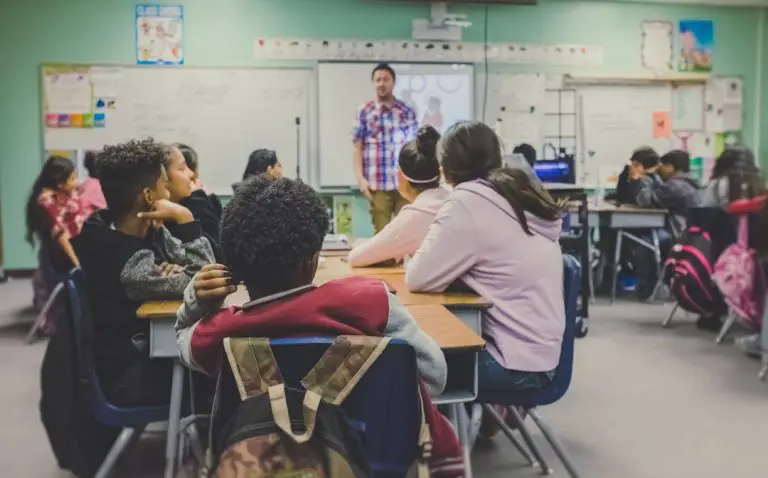Support our educational content for free when you buy through links on our site. Learn more
15 Powerful Teaching Strategies Examples to Transform Your Classroom 🚀 (2025)
Have you ever wondered why some lessons stick like glue while others slip right through your students’ minds? The secret often lies in the teaching strategies behind the scenes. Whether you’re a seasoned educator or just starting out, mastering a diverse set of teaching strategies can turn your classroom into a vibrant hub of curiosity, collaboration, and deep learning.
In this article, we’ll unveil 15 proven teaching strategies examples that have helped teachers worldwide boost engagement, manage diverse learners, and create meaningful learning experiences. From active learning and inquiry-based approaches to blending technology and culturally responsive methods, we’ll guide you through practical, easy-to-implement ideas. Plus, stick around for real-life success stories and expert tips on choosing the right strategy for your unique classroom.
Did you know that only about 40% of high school students report feeling engaged in class? Imagine flipping that statistic by simply tweaking your approach! Ready to discover how? Let’s dive in.
Key Takeaways
- Variety and flexibility in teaching strategies are essential for meeting diverse student needs and boosting engagement.
- Active learning, collaborative projects, and inquiry-based methods are among the most effective ways to deepen understanding.
- Blended learning models and technology tools like Prodigy and Google Workspace can amplify your instructional impact.
- Culturally responsive and social-emotional learning strategies create inclusive classrooms where every student feels valued.
- Measuring impact through formative assessments and rich documentation helps refine your teaching for continuous improvement.
Ready to transform your teaching toolkit? Let’s explore these strategies in detail!
Table of Contents
- ⚡️ Quick Tips and Facts About Teaching Strategies
- 📚 The Evolution and Importance of Effective Teaching Strategies
- 🎯 Why Teaching Strategies Are a Game-Changer in School Improvement Plans
- 1. Top 15 Teaching Strategies Examples to Boost Student Engagement
- 💡 Blended Learning: Combining Traditional and Modern Teaching Strategies
- 🔍 How to Choose the Right Teaching Strategy for Your Classroom
- 🛠️ Tools and Resources to Implement Effective Teaching Strategies
- 📊 Measuring the Impact of Your Teaching Strategies: Tips and Metrics
- 🎓 Real-Life Success Stories: Teaching Strategies That Made a Difference
- 🧩 Integrating Social-Emotional Learning with Teaching Strategies
- 🌍 Culturally Responsive Teaching Strategies: Examples and Best Practices
- 📅 Planning Your Lesson: Incorporating Teaching Strategies Seamlessly
- 💬 The Bottom Line: Why Mastering Teaching Strategies Transforms Education
- 🔗 Recommended Links for Further Exploration on Teaching Strategies
- ❓ FAQ: Your Burning Questions About Teaching Strategies Answered
- 📚 Reference Links and Credible Sources on Teaching Strategies
Here is the main content of the article, from the “Quick Tips and Facts” section to the section before the “Conclusion”.
⚡️ Quick Tips and Facts About Teaching Strategies
Welcome! We’re the team at Teacher Strategies™, and we’ve spent decades in the trenches—er, classrooms—figuring out what really works. Before we dive deep, here are some juicy tidbits and hard-won truths to get your mind buzzing:
- Variety is the Spice of Learning: Using a mix of teaching strategies can significantly boost student engagement and retention. Sticking to one method is like eating the same meal every day—boring and nutritionally deficient!
- Fact Check: A Gallup poll revealed that student engagement drops significantly as they get older. By high school, only about 40% of students feel engaged. The right strategies can reverse this trend!
- ✅ Do This: Focus on active learning. Get students moving, discussing, and creating. As the Prodigy blog notes, active learning places students at the center of the classroom to increase engagement.
- ❌ Not That: Avoid collective punishment. It rarely works and can damage your relationship with the students who were on task.
- Cognitive Load is Real: Ever see that “brain full” look on a student’s face? That’s cognitive overload. As educational psychologist John Sweller’s theory suggests, a student’s working memory is limited. Great teaching strategies help manage this load, making learning feel less like a struggle and more like an “aha moment!”
- Personal Anecdote: I (Sarah, a 3rd-grade teacher on the team) once had a student who just couldn’t grasp fractions. We tried worksheets, lectures, you name it. Then, we did a “Pizza Fractions” project using real pizza boxes and paper ingredients. The lightbulb didn’t just turn on; it exploded! That’s the power of a well-chosen, hands-on strategy.
📚 The Evolution and Importance of Effective Teaching Strategies
Remember the old days? The teacher stood at the front, lecturing from a podium while students sat in silent, neat rows, absorbing information like sponges. Or… pretending to. That “sage on the stage” model had its run, but modern education has thankfully evolved.
Today, we understand that learning isn’t a passive activity. It’s active, messy, collaborative, and deeply personal. The shift has been from a teacher-centered approach to a student-centered one, where the educator acts as a “guide on the side.” This requires a dynamic toolkit of instructional strategies.
Why is this so important? Because the world our students are entering demands more than rote memorization. It demands critical thinking, problem-solving, collaboration, and creativity. As one source wisely puts it, a willingness to adopt new teaching strategies is crucial for providing students with the highest quality of education possible. The goal isn’t just to teach facts; it’s to build lifelong learners who have a genuine passion for knowledge.
🎯 Why Teaching Strategies Are a Game-Changer in School Improvement Plans
Let’s talk big picture. School improvement isn’t just about new textbooks or fancy technology. It’s about what happens in the classroom, moment by moment. That’s where teaching strategies become the engine of change.
When a school or district commits to implementing effective, research-backed teaching methods, incredible things happen:
- Student Achievement Rises: Engaging strategies lead to deeper understanding. When students are active participants in their learning, they retain information better and perform better on assessments.
- Behavior Issues Decrease: A bored student is often a disruptive student. Strategies like project-based learning and gamification capture students’ attention, leaving less room for off-task behavior.
- Teacher Morale Soars: Let’s be honest, lecturing all day is draining! Using diverse strategies makes teaching more fun and rewarding. It empowers educators to be creative and responsive to their students’ needs.
Ultimately, as the experts at Schools That Lead state, “The goal of effective teaching is to foster a deep understanding and lasting engagement with the subject matter.” That deep engagement is the cornerstone of any successful school improvement plan.
1. Top 15 Teaching Strategies Examples to Boost Student Engagement
Alright, let’s get to the main event! You’re looking for concrete examples, and we’ve got you covered. Here are 15 categories of powerful strategies, packed with ideas you can use tomorrow.
1.1 Active Learning Techniques
Active learning gets students out of their seats and into the driver’s seat of their own education. It’s all about doing, not just listening.
- Think-Pair-Share: This is a classic for a reason. You pose a question, give students a moment to think individually, have them discuss with a partner, and then share with the whole class. It’s a simple way to ensure every voice is heard.
- The Pause Procedure: During a lecture or explanation, intentionally pause every 10-15 minutes to let students process and ask questions. This respects the limits of working memory and prevents cognitive overload.
- Muddiest Point: A fantastic formative assessment tool. At the end of a lesson, ask students to jot down the “muddiest point”—the one thing they are still confused about. This gives you instant, actionable feedback.
1.2 Collaborative Learning Approaches
Collaboration is a key 21st-century skill. These strategies teach students how to work together toward a common goal.
- Project-Based Learning (PBL): Students work for an extended period to investigate and respond to an authentic, engaging, and complex question, problem, or challenge. While some critics argue PBL can focus too much on the final product over the learning process, we find that with a clear rubric and regular check-ins, it’s a phenomenal way to build real-world skills.
- Cooperative Learning (Jigsaw): In a Jigsaw activity, you divide a topic into smaller parts. Each student in a group becomes an “expert” on one part. They then meet with experts from other groups to discuss their piece before returning to their original group to teach their peers. It promotes both individual accountability and teamwork.
- Peer Teaching: Having students teach each other is incredibly powerful. It develops reasoning, critical thinking, and communication skills. Plus, explaining a concept to someone else is one of the best ways to solidify your own understanding.
1.3 Differentiated Instruction Examples
Your students are not a monolith. They have diverse learning styles, backgrounds, and needs. Differentiated instruction is about honoring that diversity by tailoring your teaching.
- Flexible Seating: From wobble stools to beanbag chairs, letting students choose where they work can have a huge impact on focus and sensory integration.
- Tiered Assignments: The whole class works toward the same core learning objective, but the assignments are tiered in complexity. Some students might be working on foundational skills, while others are tackling a more advanced application of the concept.
- Choice Boards: Create a grid of activities (like a tic-tac-toe board). Students must complete a certain number of activities, giving them autonomy over how they learn and demonstrate their knowledge.
1.4 Inquiry-Based Learning in Action
This strategy flips the script. Instead of giving students the answers, you give them the questions—or better yet, you guide them to ask their own. It’s about fostering curiosity and critical thinking.
There are several levels of inquiry:
- Confirmation Inquiry: You provide the question and procedure; students confirm a known result.
- Structured Inquiry: You provide the question and procedure; students generate an explanation.
- Guided Inquiry: You provide the question; students design the procedure.
- Open Inquiry: Students formulate their own questions and design their own investigations from scratch.
Research suggests that students who use inquiry-based learning are more likely to retain information.
1.5 Technology-Enhanced Teaching Strategies
Technology isn’t a replacement for good teaching, but it can be a powerful amplifier.
- Gamification: Turn learning into a game! This can be as simple as a points system or as complex as using dedicated educational games. A study found that gamification kept students motivated and engaged in the classroom. Platforms like Prodigy Math and Prodigy English are fantastic examples, offering curriculum-aligned questions in an engaging game world.
- Virtual Field Trips: Can’t take your class to the Louvre? No problem! Google Arts & Culture lets you explore museums and landmarks from around the world right from your classroom.
- Blended Learning: This approach combines online learning with traditional face-to-face instruction, offering a powerful mix of flexibility and support. We’ll dive deeper into this next!
💡 Blended Learning: Combining Traditional and Modern Teaching Strategies
Blended learning is the best of both worlds. It’s not about replacing teachers with computers; it’s about leveraging technology to create a more personalized and efficient learning environment.
Here are a couple of popular models:
- The Flipped Classroom: This is a big one. Students watch instructional videos (the “lecture” part) for homework, and then use class time for what used to be homework—hands-on activities, collaborative projects, and one-on-one teacher support. It maximizes that precious face-to-face time.
- Station Rotation Model: Students rotate through different learning stations in the classroom. One station might be direct instruction with the teacher, another could be a collaborative project with peers, and a third might involve independent work on an educational app like Kahoot! or Quizlet.
The beauty of blended learning is its flexibility. You can adapt it to any grade level or subject area, creating a truly dynamic classroom. For more ideas, check out our resources on blended learning models.
🔍 How to Choose the Right Teaching Strategy for Your Classroom
With so many options, how do you choose? It’s like being a chef—you need to know which ingredients (strategies) to combine for the perfect dish (lesson). Don’t be afraid to start small and work your way up!
Here’s a quick checklist to guide your decision-making:
| Factor to Consider | Questions to Ask Yourself |
|---|---|
| Learning Objective | What do I want my students to know or be able to do by the end of this lesson? Is it a skill, a concept, or a fact? |
| Student Needs | What are my students’ strengths, weaknesses, and learning preferences? Do I have English language learners or students with special needs? |
| Subject Matter | Is this a hands-on science experiment or an abstract math concept? The content often points to the best strategy. |
| Available Resources | What technology, materials, and time do I have? A grand PBL project might not be feasible in a 40-minute period. |
| Your Teaching Style | What are you comfortable with? It’s okay to step out of your comfort zone, but start with strategies that align with your strengths. |
As one expert advises, “Frequently reflect on the match between your classroom and the philosophy of teaching and learning you want to practice.”
🛠️ Tools and Resources to Implement Effective Teaching Strategies
Having the right tools can make all the difference when implementing new strategies. Here are some of our team’s favorites, from low-tech staples to high-tech game-changers.
Digital Platforms & Software:
- Teaching Strategies: This company offers a fantastic suite of tools for early childhood educators. Their GOLDFinch assessment solution, SmartTeach platform, and family engagement apps like Tadpoles and ReadyRosie are designed to help you collect meaningful documentation and plan instruction.
- Prodigy: As mentioned, their free, game-based learning platforms for math and English are a huge hit with students and provide teachers with valuable assessment data.
- Google Workspace for Education: An absolute powerhouse for collaboration. Docs, Slides, and Forms are essential for everything from peer editing to formative assessments.
- PlayFactile: A great tool for creating your own Jeopardy-style review games, perfect for collaborative and competitive fun.
👉 Shop Educational Tech on:
Low-Tech, High-Impact Tools:
- Mini-Whiteboards: Perfect for quick checks for understanding.
- Post-it Notes: Incredibly versatile for brainstorming, exit tickets, and feedback.
- Manipulatives: From counting bears to algebra tiles, hands-on objects make abstract concepts concrete.
📊 Measuring the Impact of Your Teaching Strategies: Tips and Metrics
So, you’ve tried a new strategy. How do you know if it worked? Assessment is key, but it’s not just about the big end-of-unit test.
Formative vs. Summative Assessment
Think of it this way:
- Formative Assessment is like a chef tasting the soup while cooking. It happens during the learning process and allows you to make adjustments. Examples include think-pair-share, exit tickets, and observing students during group work.
- Summative Assessment is like a customer tasting the soup at the end of the meal. It evaluates what students have learned at the end of a unit.
For truly effective teaching, you need a healthy balance of both.
The Power of Documentation
Especially in early childhood education, documentation is your superpower. It’s not just about collecting work samples; it’s about telling a story of a child’s learning journey. The team at Teaching Strategies puts it perfectly: “It’s not about the amount of documentation you have, but how you use it to guide instruction.”
To make documentation rich and meaningful, be sure to:
- Capture context: Where and when did the learning happen?
- Quote directly: What did the child say?
- Connect to objectives: What skills or knowledge does this demonstrate?
🎓 Real-Life Success Stories: Teaching Strategies That Made a Difference
Let me tell you about Leo. He was in my (this is Mark, our resident middle school science guru) 7th-grade class, and he was completely checked out. Head on the desk, zero participation, the works. We were starting our unit on ecosystems, and I knew another lecture would just push him further away.
So, I took a risk. I announced we were doing a Problem-Based Learning project. The problem? Our school’s neglected courtyard. Their mission? To design a sustainable ecosystem that could thrive in that space.
For the first few days, Leo was his usual self. But then, something shifted. His group was researching native plants, and he started chiming in. He knew which plants attracted butterflies. He started sketching designs. By the end of the project, Leo was the one presenting his group’s detailed plan—complete with a composting system—to the principal. He found a way to connect his own interests to the content. It wasn’t just a grade for him; it was his project. That’s a transformation you never forget.
🧩 Integrating Social-Emotional Learning with Teaching Strategies
Academic skills are only half the battle. Students also need social and emotional skills—like self-awareness, empathy, and responsible decision-making—to succeed in school and in life. The good news is you don’t need a separate curriculum to teach this. You can weave Social-Emotional Learning (SEL) directly into your academic instruction.
- Collaborative Projects teach teamwork and conflict resolution.
- Peer Feedback sessions build communication skills and the ability to accept constructive criticism.
- Growth Mindset discussions help students see challenges as opportunities and value effort over innate talent. When you praise a student’s persistence rather than just a correct answer, you are actively teaching a growth mindset.
🌍 Culturally Responsive Teaching Strategies: Examples and Best Practices
Culturally responsive teaching is about making learning meaningful and relevant to all your students by drawing on their cultural backgrounds, experiences, and perspectives. It’s not just about celebrating holidays; it’s a fundamental approach to instruction.
Research has shown that “elements of culturally relevant teaching were significantly associated with academic outcomes and ethnic-racial identity development.”
Here are some ways to be more culturally responsive:
- Get to Know Your Students: What are their interests, traditions, and home languages? Use this knowledge to build relationships and connect lessons to their lived experiences.
- Diversify Your Materials: Ensure your classroom library, historical examples, and word problems feature people from a wide range of backgrounds.
- Offer Different Ways to Demonstrate Learning: Some cultures value oral storytelling, while others emphasize written expression. Provide options that allow all students to shine.
📅 Planning Your Lesson: Incorporating Teaching Strategies Seamlessly
A great lesson doesn’t happen by accident. It’s a work of art, carefully designed to guide students from one level of understanding to the next. Here are two powerful frameworks to help you plan.
Webb’s Depth of Knowledge (DoK)
This framework helps you think about the cognitive complexity of your tasks. Are you just asking students to recall facts, or are you pushing them to think strategically and critically?
- Level 1: Recall & Reproduction: Recite a fact, label a diagram.
- Level 2: Skills & Concepts: Compare and contrast, summarize.
- Level 3: Strategic Thinking: Formulate a hypothesis, justify a response.
- Level 4: Extended Thinking: Design an experiment, conduct a long-term investigation.
A good lesson will often move students through these levels.
Cognitive Load Theory in Practice
Remember that “My brain is full!” feeling? As we learned from the science of learning in our featured video, our brains sort new information into categories, or “schemas.” When you plan your lessons, think about how you can reduce unnecessary cognitive load so students can focus on the actual learning.
- Scaffold New Concepts: Connect new ideas to what students already know. For example, connect exponents to the foundational knowledge of multiplication.
- Use Worked Examples: Show students a completed problem step-by-step before asking them to solve one on their own.
- Avoid Distractions: A cluttered slide or a worksheet with too much visual noise can overwhelm working memory. Keep it clean and focused.
By strategically designing instruction, you can help your students’ brains “work smarter, not harder.”
💬 The Bottom Line: Why Mastering Teaching Strategies Transforms Education
Whew, that was a lot! But here’s the simple truth: mastering a variety of teaching strategies is what separates a good teacher from a truly transformative one. It’s about having the right tool for the right job at the right time. It’s about being a responsive, flexible, and creative educator who can meet the needs of every single learner.
By moving beyond the one-size-fits-all model, you create a classroom that is more engaging, equitable, and effective. You empower students to take ownership of their learning and develop the skills they need to thrive. So, you’re armed with dozens of strategies, but where do you even begin? And what are the most common pitfalls to avoid? We’ve got the answers coming right up.
🎉 Conclusion

We’ve journeyed through the vibrant world of teaching strategies—from active learning and inquiry-based approaches to the magic of blended learning and culturally responsive teaching. Along the way, we’ve shared practical examples, real-life success stories, and expert insights from our team at Teacher Strategies™.
So, what’s the takeaway? Effective teaching strategies are not just fancy buzzwords; they are the lifeblood of engaging, meaningful, and equitable education. They help you connect with your students, meet diverse needs, and foster a classroom culture where curiosity thrives.
Remember Leo’s transformation with Problem-Based Learning? That’s the power of choosing the right strategy for your learners and context. And while the options might seem overwhelming, starting small and reflecting often will guide you to what works best.
If you’re looking for a reliable way to implement these strategies, tools like Prodigy and platforms from Teaching Strategies provide excellent support—combining assessment, engagement, and instructional planning in one place. They’re not magic wands, but they’re close!
In short: Embrace variety, be flexible, and keep your students at the center. Your classroom will thank you, and so will your students.
🔗 Recommended Links for Further Exploration on Teaching Strategies
Ready to dive deeper or equip your classroom with the best resources? Here are some top picks:
👉 Shop Educational Tools and Platforms:
-
Prodigy Math & English:
Amazon | Walmart | Prodigy Official Website -
Teaching Strategies Assessment Tools (GOLDFinch, SmartTeach):
Teaching Strategies Official Website -
Google Workspace for Education:
Google for Education -
PlayFactile (Jeopardy-style games):
PlayFactile Official Website
Books to Boost Your Teaching Strategy Arsenal:
- “Teach Like a Champion 2.0” by Doug Lemov — Amazon Link
- “The Skillful Teacher” by Stephen D. Brookfield — Amazon Link
- “Culturally Responsive Teaching and The Brain” by Zaretta Hammond — Amazon Link
- “Blended: Using Disruptive Innovation to Improve Schools” by Michael B. Horn and Heather Staker — Amazon Link
❓ FAQ: Your Burning Questions About Teaching Strategies Answered

What are some classroom management strategies for creating a positive learning environment?
Creating a positive learning environment starts with clear expectations and consistent routines. Model the behavior you want to see, encourage student initiative, and avoid collective punishment, which can breed resentment. Flexible seating can also help students regulate their sensory needs, improving focus. Remember, classroom management is proactive, not reactive—set the tone early, and maintain it with respect and fairness.
Read more about “11 Powerful Positive Reinforcement Strategies for the Classroom 🎉 (2025)”
How can I use technology to enhance my teaching strategies?
Technology is a fantastic amplifier for teaching strategies. Use gamified platforms like Prodigy to engage students in math and English practice aligned with curriculum standards. Virtual field trips via Google Arts & Culture can bring distant places into your classroom. Tools like Google Forms allow for quick formative assessments, and apps like PlayFactile make review sessions fun and interactive. The key is to blend technology thoughtfully, ensuring it supports—not replaces—your instructional goals.
Read more about “What Are the 5 Teaching Strategies? 7 Powerful Methods for 2025 🎓”
What are some examples of assessment strategies that promote student learning?
Formative assessments such as think-pair-share, exit tickets, and the muddiest point technique provide real-time feedback to guide instruction. Summative assessments evaluate cumulative learning but should be balanced with formative checks. Rich documentation, especially in early childhood, captures detailed observations that inform personalized instruction. Using digital tools like GOLDFinch can streamline this process, making assessment both meaningful and manageable.
Read more about “What Are the 6 Principles of Teaching? Unlock Success in 2025! 🎓”
How can I incorporate active learning strategies into my lessons?
Start small! Use think-pair-share to get students talking, or implement the pause procedure during lectures to allow processing time. Incorporate hands-on activities, such as experiments or role-playing, to deepen understanding. Encourage students to ask questions and lead discussions. Active learning shifts the classroom dynamic from passive listening to active engagement, which boosts retention and enjoyment.
Read more about “Master Time Management in Lesson Planning: 10 Proven Strategies 🚀 (2025)”
What are some examples of effective teaching strategies for different learning styles?
Differentiated instruction is your best friend here. For visual learners, use diagrams, videos, and graphic organizers. Auditory learners benefit from discussions, read-alouds, and podcasts. Kinesthetic learners need hands-on activities and movement breaks. Strategies like tiered assignments and choice boards allow students to engage with content in ways that suit their strengths while still meeting learning objectives.
Read more about “What Is a Key Teaching Strategy? 12 Game-Changers for 2025 🎯”
What are the most effective teaching strategies for student engagement?
Engagement thrives when students feel connected and challenged. Project-Based Learning, gamification, inquiry-based learning, and collaborative group work are all proven to boost engagement. Incorporate culturally responsive teaching to make content relevant to students’ lives. Remember, engagement is not a one-size-fits-all; mixing strategies keeps the classroom dynamic and inclusive.
Read more about “What are the most effective teaching strategies for student engagement?”
How can teachers implement collaborative learning in the classroom?
Start by setting clear group goals and roles to ensure accountability. Use structures like the Jigsaw method to promote interdependence. Teach students how to give constructive feedback and resolve conflicts. Incorporate peer teaching opportunities where students explain concepts to one another. Collaborative learning not only builds academic skills but also social-emotional competencies like communication and empathy.
Read more about “10 Secrets to Effective Professional Learning Communities for Teachers (2025) 🚀”
What are some examples of differentiated instruction techniques?
Flexible seating arrangements, tiered assignments, and choice boards are practical ways to differentiate. You can also vary the complexity of tasks, provide different types of resources (videos, texts, manipulatives), and offer multiple ways for students to demonstrate understanding (presentations, essays, projects). Technology tools like Prodigy adapt questions to individual skill levels, making differentiation easier.
Read more about “15 Examples of Pedagogical Practices That Transform Learning 🚀 (2025)”
How do formative assessments improve teaching strategies?
Formative assessments provide ongoing feedback that helps teachers adjust instruction in real-time. They identify misconceptions early, allowing for timely intervention. This dynamic approach improves learning outcomes by focusing on the process rather than just the product. Techniques like exit tickets, self-evaluation, and peer feedback create a feedback loop that benefits both students and teachers.
Read more about “9 Evidence-Based Strategies to Assess & Boost Learning in 2025 🎯”
📚 Reference Links and Credible Sources on Teaching Strategies
- Schools That Lead: Best Teaching Strategies
- Prodigy Game Blog: Comprehensive Teaching Strategies
- Teaching Strategies: How to Collect Rich, Meaningful Documentation in Preschool and Pre-K
- Google Arts & Culture
- Prodigy Official Website
- Teaching Strategies Official Website
- PlayFactile Official Website
- Gallup Student Engagement Poll
- Google Workspace for Education
We hope this comprehensive guide empowers you to transform your teaching and inspire your students every day! For more expert advice and resources, visit Teacher Strategies™.






